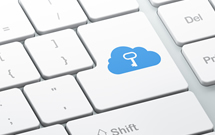Educators and administrators have a variety of tools to educate students about digital citizenship
 Students may be able to operate technology tools and navigate resources without a problem, but students don’t always realize that what they post or make public online, and behaviors they exhibit online, tend to stick around. To help students learn about appropriate online behavior and decisions, school leaders are turning to digital citizenship education.
Students may be able to operate technology tools and navigate resources without a problem, but students don’t always realize that what they post or make public online, and behaviors they exhibit online, tend to stick around. To help students learn about appropriate online behavior and decisions, school leaders are turning to digital citizenship education.
It’s important to instruct kids “how to not only use the computer, but how to live in this digital world,” said Lenny Schad, chief information technology officer in the Houston Independent School District, during a recent webinar reviewing important aspects of digital deployments.
Digital citizenship is becoming an increasingly important consideration during the mobile device deployment process, experts say.
(Next page: What district leaders say about digital citizenship; Plus, take our poll.)
“Digital citizenship wasn’t that big of a focus for us when we started, but it definitely is now,” said Scott Smith, Chief Technology Officer in North Carolina’s Mooresville Graded School District. “We have a digital citizenship topic of the month, whether it’s copyright [or] bullying, and embedding that into the daily activities of what we do is of paramount importance.”
The district has revised its acceptable use policy several times, and the document itself has changed from a responsible use policy to a required use policy to indicate that if students are going to use technology in schools, they must adhere to certain hallmarks of school culture.
“It has to do with the culture of our schools [and] what it means to be a responsible citizen and student,” Scott said.
Here are 10 digital citizenship resources:
Common Sense Media offers a free K-12 digital citizenship curriculum designed to help students think about their behaviors and actions online.
Teachers can access YouTube’s digital citizenship resources to help educate students, ages 13-17, about responsible online behavior, protecting their identity, and more.
BrainPOP’s digital citizenship spotlight touches on issues including online safety, cyberbullying, plagiarism, information privacy, and more.
BrainPOP Jr. also offers a digital citizenship spotlight geared toward younger students.
This guide to “Staying Sane in Cyberspace” includes 45 digital citizenship resources compiled by TechChef4u.
A guide to online manners, arranged in an infographic, can help students learn more about how their online actions impact them now and in the future.
This resource provides valuable information on Creative Commons, online attribution, and usage rules.
While this is a paper resource, this poster about Facebook bullying could serve as a helpful and useful guide for students.
Embrace Civility in the Digital Age, formerly the Center for Safe and Responsible Internet Use, offers a number of resources and tools to teach students how to be cyber-savvy.
NetSmartzKids, a program of the National Center for Missing and Exploited Children, offers digital citizenship and online safety resources.
[poll id=”55″]
- Friday 5: Universal Design for Learning - April 19, 2024
- Educators love their edtech, but want more training - April 18, 2024
- Friday 5: College and career readiness - April 12, 2024
